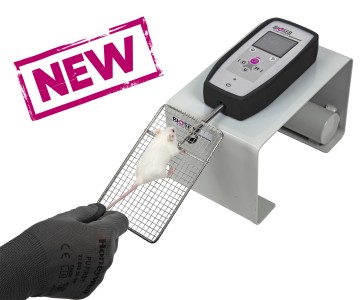Authors
Gazina EV, Leaw BT, Richards KL, Wimmer VC, Kim TH, Aumann TD, Featherby TJ, Churilov L, Hammond VE, Reid CA, Petrou S
Lab
The Florey Institute of Neuroscience and Mental Health, Parkville, Australia
Journal
Hum Mol Genet.
Abstract
Developmentally regulated alternative splicing produces 'neonatal' and 'adult' isoforms of four Na(+) channels in human brain, NaV1.1, NaV1.2, NaV1.3 and NaV1.6. Heterologously expressed 'neonatal' NaV1.2 channels are less excitable than 'adult' channels; however, functional importance of this difference is unknown. We hypothesized that the 'neonatal' NaV1.2 may reduce neuronal excitability and have a seizure-protective role during early brain development. To test this hypothesis, we generated NaV1.2(adult) mice expressing only the 'adult' NaV1.2, and compared the firing properties of pyramidal cortical neurons, as well as seizure susceptibility, between the NaV1.2(adult) and wild-type (WT) mice at postnatal day 3 (P3), when the 'neonatal' isoform represents 65% of the WT NaV1.2. We show significant increases in action potential firing in NaV1.2(adult) neurons and in seizure susceptibility of NaV1.2(adult) mice, supporting our hypothesis. At postnatal day 15 (P15), when 17% of the WT NaV1.2 is 'neonatal', the firing properties of NaV1.2(adult) and WT neurons converged. However, inhibitory postsynaptic currents in NaV1.2(adult) neurons were larger and the expression level of Scn2a mRNA was 24% lower compared with the WT. The enhanced seizure susceptibility of the NaV1.2(adult) mice persisted into adult age. The adult NaV1.2(adult) mice also exhibited greater risk-taking behaviour. Overall, our data reveal a significant impact of 'neonatal' NaV1.2 on neuronal excitability, seizure susceptibility and behaviour and may contribute to our understanding of NaV1.2 roles in health and diseases such as epilepsy and autism.
BIOSEB Instruments Used
Grip strength test (BIO-GS3)
Source :

 Douleur - Allodynie/Hyperalgésie Thermique
Douleur - Allodynie/Hyperalgésie Thermique Douleur - Spontanée - Déficit de Posture
Douleur - Spontanée - Déficit de Posture Douleur - Allodynie/Hyperalgésie Mécanique
Douleur - Allodynie/Hyperalgésie Mécanique Apprentissage/Mémoire - Attention - Addiction
Apprentissage/Mémoire - Attention - Addiction Physiologie & Recherche Respiratoire
Physiologie & Recherche Respiratoire




































 Douleur
Douleur Système Nerveux Central (SNC)
Système Nerveux Central (SNC)  Neurodégénérescence
Neurodégénérescence Système sensoriel
Système sensoriel Système moteur
Système moteur Troubles de l'humeur
Troubles de l'humeur Autres pathologies
Autres pathologies Système musculaire
Système musculaire Articulations
Articulations Métabolisme
Métabolisme Thématiques transversales
Thématiques transversales Congrès & Meetings
Congrès & Meetings 